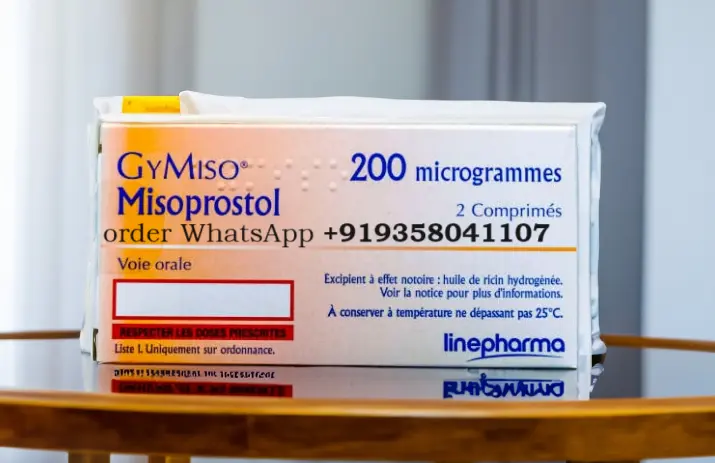
To ensure the safe and effective use of Misoprostol, it's crucial to follow the recommended guidelines and instructions. Here's how to use Misoprostol based on its various medical applications
2. Inducing Abortion
3. Initiating Labor
It is important to carefully read the patient information leaflet that comes with the medicine to get the best results. If you have any questions or concerns about the use of misoprostol, do not hesitate to consult your doctor, nurse, or pharmacist for clarification. Misoprostol should always be used under the supervision and guidance of a health care professional.
The medicine may also cause some unwanted effects. It is important to note that not all of these side effects may occur, but if they occur, they may require medical attention. Please consult your healthcare provider if you experience any of the following side effects
Common Side Effects (1% to 10%)
Here is a list of potential side effects associated with the use of this medication, along with their respective incidence rates:
Before you start taking Misoprostol, it's crucial to be mindful of several important factors for your safety and well-being. Here's what you need to know
Allergies: Inform your doctor or pharmacist if you are allergic to Misoprostol or have any other allergies. The product may contain inactive ingredients that could trigger allergic reactions or other complications. Consult your pharmacist for more information.
Medical History: Share your medical history with your doctor or pharmacist, particularly if you have a history of stomach or intestinal diseases, such as inflammatory bowel disease. This information is crucial for safe and effective medication use.
Alcohol and tobacco use: Regular consumption of alcohol and tobacco can increase the risk of stomach bleeding.
Pregnancy and birth control: Misoprostol should not be used during pregnancy for the prevention of stomach ulcers because of the potential risk to the unborn baby.
this medicine is made up of two medicines, Mifepristone, and Misoprostol. Contra Kit is used for medical termination of pregnancy. Contra Kit is used only to end a pregnancy that must not exceed the age of 63, which is calculated beginning on the day of menstrual cycle.
Contra Kit should only be used in accordance with the recommendations of a doctor. The treatment begins by taking Mifepristone. Misoprostol is recommended after 36 to 48 hours after taking Mifepristone. But, Misoprostol is best administered in the presence of an Gynecologist in a hospital or clinic setting.
When you take Mifepristone You may or might not suffer vaginal bleeding. But, you might suffer from abdominal cramping and stomach pain, diarrhea nausea, and stomach pain immediately following the use of Misoprostol. It is possible that you will experience vaginal bleeding within the first 4 hours after taking Misoprostol. It is also possible to be required to remain at the health clinic or center for minimum 3 hours after taking this medication. In the first 14 days following your start of Mifepristone (pill that you used prior to Misoprostol) your Gynecologist might run blood tests or conduct an ultrasound to determine if pregnancy is terminated or not.
The research has shown that this medication does not affect fertility in women. The chances of you becoming pregnant are the same as those who did not take this drug.
The most frequent side effects the use of Contra Kit are abdominal pain and abdominal cramping nausea, diarrhea constriction of the uterus pelvic pain and shaking. If you notice excessive vaginal bleeding or any of these side effects irritate you, you should consult your Gynecologist.
Q. What precaution is needed following the treatment using?
A: Following treatment, it is important to be aware that the bleeding from your uterus usually begins within a couple of days of having taken the medication. The bleeding can last for 2 or 3 weeks. If the bleeding is prolonged and heavy you should contact your doctor immediately.
Q Can I become pregnant right away after a the termination of pregnancy on medical grounds?
1. It's suggested to avoid becoming pregnant again within a short time after the termination of your pregnancy. It is recommended that you begin using a contraceptive method in the first 3-9 days after using your CONTRA KIT. Talk to your physician about additional precautions.
Q Do you experience pain when you are using?
A: When you are treating using this medicine you may experience indications of uterine contractions such as lower abdominal cramps, severe bleeding and discomfort. Consult your doctor if you feel unwell.
Q: What happens if I do not take the correct dosage?
1. If you do not remember to follow any aspect or component of treatment it might not be effective, meaning that your pregnancy might not completely eliminated. Talk to your doctor about the possibility that you might require further treatment to end your pregnancy.
Q How long bleeding is normal following treatment ?
1. The blood loss normally lasts for a few days to two weeks, and then should turn lighter after a few days. There is a possibility that you will pass blood clots or tissues or experience light bleeding for greater than two weeks. Talk to your doctor in the event of prolonged period of bleeding.